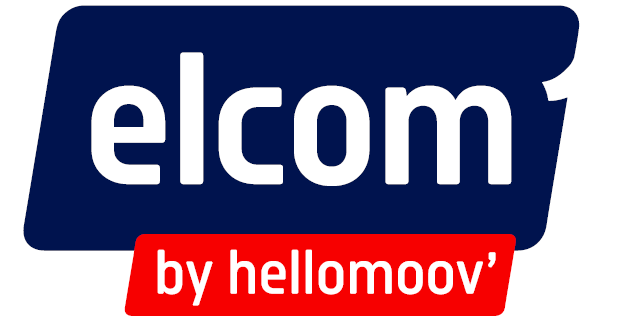Elcom
To store temporarily or accumulate
A conveyor system can collect or accumulate products. The choice of method depends on factors such as the type of products, desired accumulation capacity, space availability, and system requirements. Conveyor systems can be customized and integrated with automation technologies to meet specific accumulation needs in various industries.
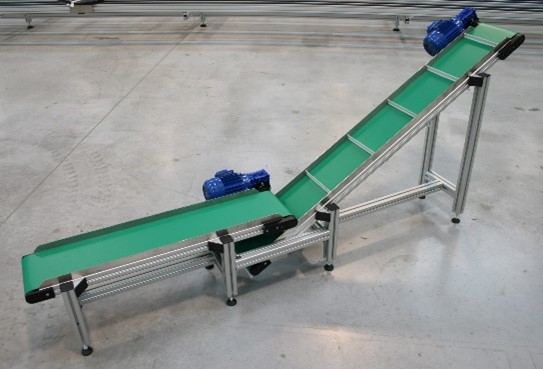
Accumulating Rollers conveyors
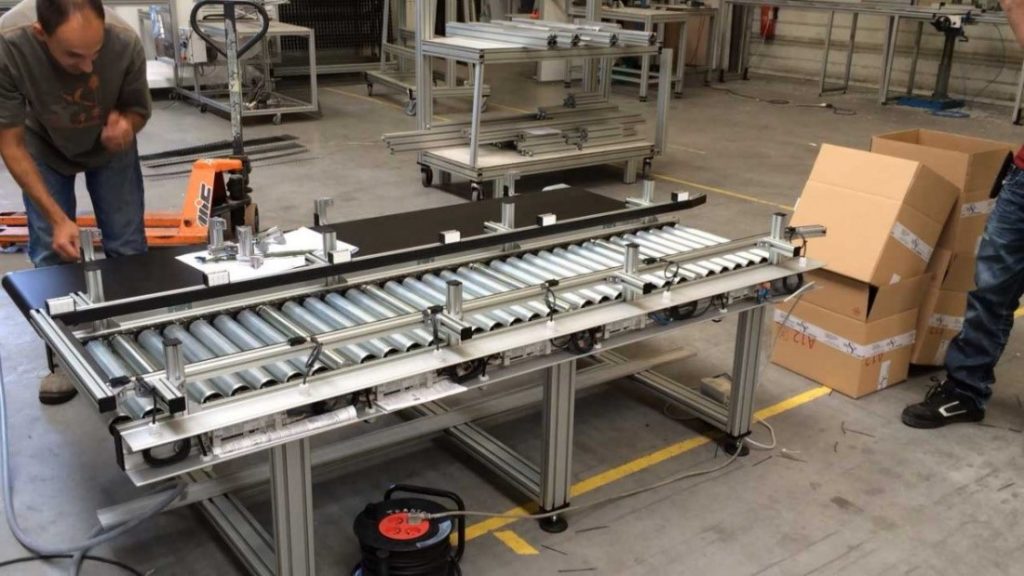
This method utilizes a series of low-friction rollers placed at a slight angle to create a dynamic accumulation zone. As products are conveyed, they accumulate on the rollers, creating a buffer. The accumulation can be controlled by controlling the speed of the rollers or by using mechanical stops.
At elcom, the intelligent motorized roller conveyor allows products to be transported while managing the accumulation independently. The internal control of the roller conveyor ensures a pressureless accumulation transport of the isolated loads. Each zone is driven by a motorized roller connected to a fixed number of free rollers with round or PolyVee belts. No master control system is required.
The unit load that enters systematically activates the next zone when reaching the end of the zone. The charges do not touch each other and are accumulated without pressure as required. This system allows a homogeneous transport flow as well as a buffer mode operation for a smooth product conveying.
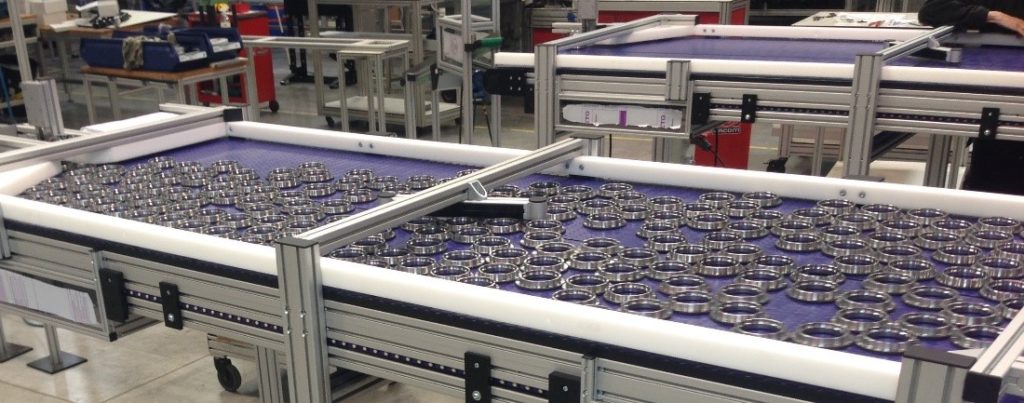
Accumulating with Belts conveyors
Similar to accumulating rollers, accumulating belts create an accumulation zone by using a conveyor belt with a low-friction surface. The belt is typically set at a slower speed compared to the main conveyor line, allowing products to accumulate. Again, speed control or mechanical stops can be used to manage accumulation. Mechanical stops are often made with elcom aluminum profiles.
Choice of a belt
The accumulation feature refers to the ability of a belt system to temporarily store or accumulate items before moving them along the conveyor line. Main considerations to take into account are :
- Friction and Grip : The material of the belt affects its frictional properties, which can influence the grip on the items being conveyed. The belt needs to have enough grip to prevent items from slipping or sliding during accumulation. Materials with high coefficient of friction, such as rubber or high-friction plastics, are commonly used for accumulation belts.
- Durability: The durability of the belt material is crucial for accumulation systems, as the belt may experience frequent starts, stops, and changes in speed. The material should be able to withstand the wear and tear associated with these operations. Strong and resilient materials like reinforced rubber or durable thermoplastics are often used for accumulation belts.
- Flexibility: The flexibility of the belt material plays a role in the accumulation feature. The belt needs to be able to conform to the shape of the items being accumulated without causing damage or excessive resistance. Flexible materials like certain types of plastics or fabric-reinforced belts are commonly used to accommodate the accumulation of various shapes and sizes of items.
- Low Rolling Resistance : When items are accumulated, the belt often moves at a slower speed or even stops momentarily. The belt material should have low rolling resistance to facilitate smooth and efficient movement when it starts again. Materials with low frictional properties, such as certain plastics or composite materials, are chosen to minimize resistance during accumulation.
- Non-Stick Properties : Depending on the application, it may be important for the belt material to have non-stick properties to prevent items from adhering to the surface of the belt during accumulation. This is particularly relevant for industries like food processing, where sticky or adhesive products are involved. Belts made from materials with non-stick coatings or low surface energy, such as polytetrafluoroethylene (PTFE), are commonly used in such applications.
At elcom, we suggest to use PET (Polyethylene terephthalate) or PU (Polyurethane), They have a low coefficient of friction. Their surface is therefore firmer, smoother – the material glides better on it.
The timing belt option is also required when accumulation is important in order to make easier, smooth and efficient movement when the conveyor starts again. It improves accumulation load by 20 to 30%.
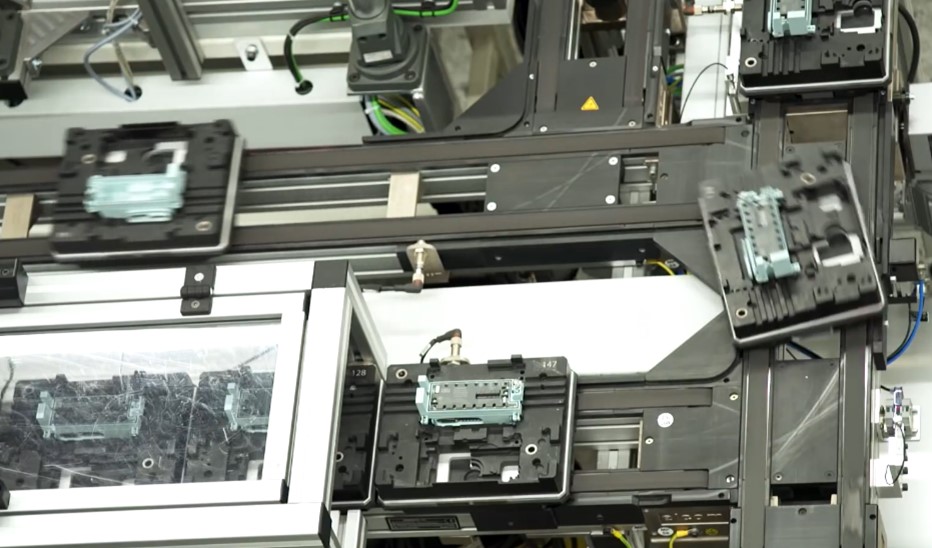
Accumulating with elcom pallet transfer systems
Elcom transfer systems operate with standard workpiece carriers on which a customized fitting of conveyed workpiece is fixed. Combined with transport units, stoppers, positioning units, lifts and many standard modules, our workpiece carrier systems offer many lay-outs for transport and part supply.
Two main tasks are fulfilled :
The first task is the transport and the management of workpiece carriers.
This is done by means of transport modules based on double belt conveyors. The conveying of workpiece carriers to the desired location is carried out through cams, standard returns and lifts.
The second task is the stop for accumulation before a manual operation (inspection, assembly…) or robotized operation (tightening, welding, loading, picking & packing….).
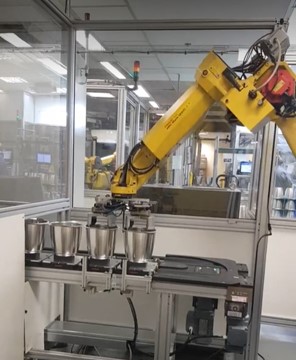
Our associated products
One question ?
Our experts are here to answer your questions, support you, and guide you through all your projects.
